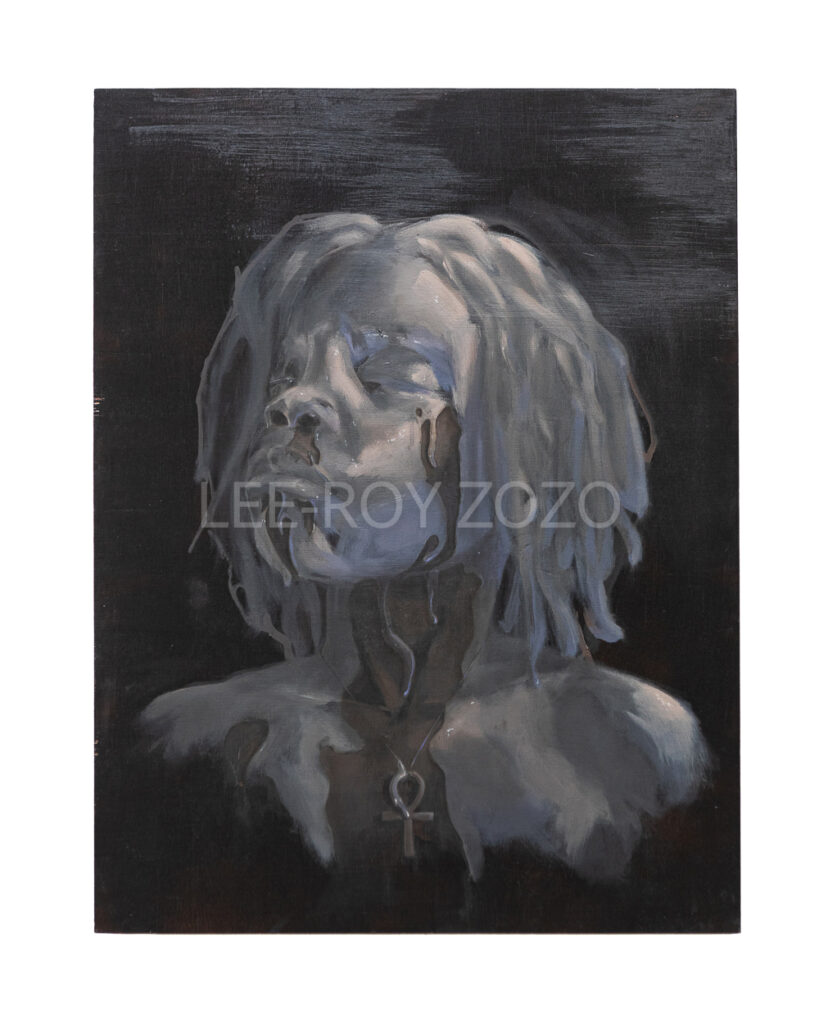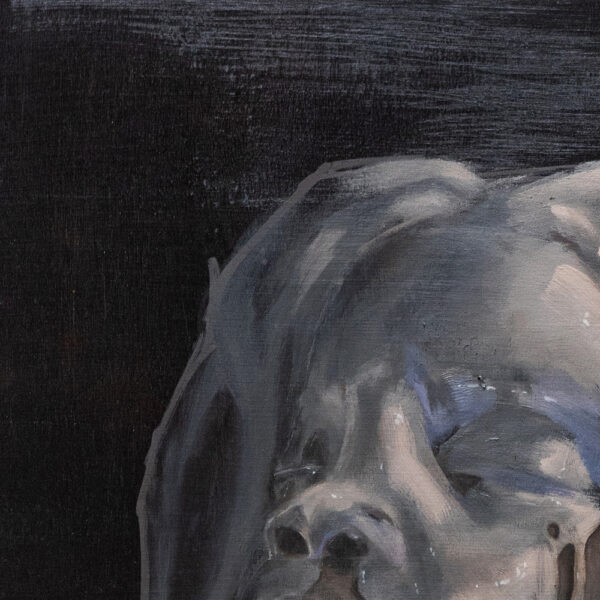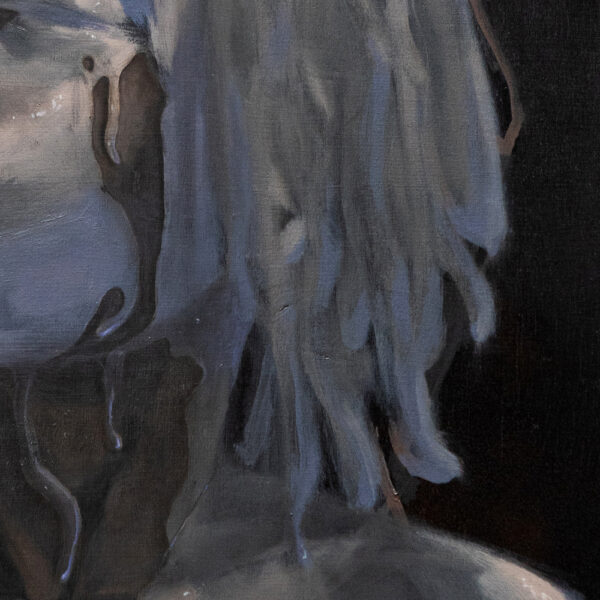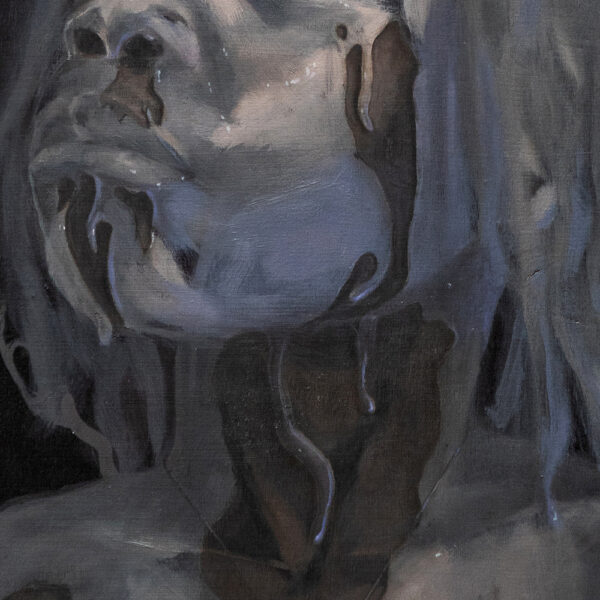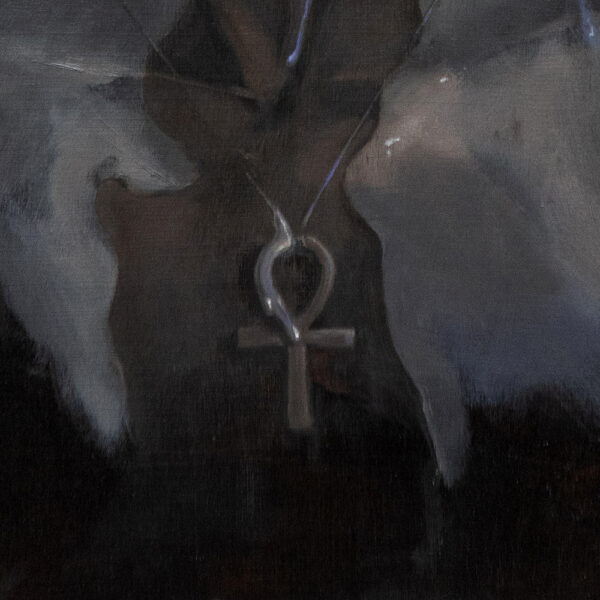A LOOK INSIDE: ‘Liquid Porcelain’
Painted on burnt wood, the shadows of her skin are born from the scars of the charred surface itself—a haunting embodiment of resilience and transformation. To burn is to undergo an irreversible process, a destruction that leaves its mark. The object may crumble to ash, or remain intact, but it will forever carry a scar… a memory… a history etched into its very being.
This piece draws you into a space of questioning, peeling back the layers of origins and intentions—exploring the births of certain religions, like Christianity. What sparked these doctrines, and how were they repurposed as tools of conquest, subjugation, and colonization? The painting holds this tension, reflecting the suffocating weight of supremacy—how it engulfs, consumes, and erases, leaving its mark on bodies, symbols, and cultures alike.
At its center lies the ankh —a symbol of life as ancient as time itself, born from Africa’s womb. A two-part union: the top, a circle representing the womb of the woman, and the bottom, the staff of the man. Together, they are creation, symbols of balance, of unity, of life’s sacred continuum. Yet the question arises: ‘Has this symbol been taken? Altered?’
What happens when life is stripped of its origins and recast through a new lens? Does it still embody life, or has it become a symbol of death? ✝️ In its transformation, has the womb—the very source of life—been erased? And if so, why? Was it altered for power? To shift control? To silence the essence of creation itself?
The painting does not simply ask these questions, it compels you to feel them. The burnt wood, scarred yet whole, becomes a metaphor for history: both fragile and unyielding, scarred yet repressive. The shadows of her skin are not passive; they breathe. They remember. They invite you to reflect on what remains and what has been erased.
This is more than a piece of art, one that forces you to confront the histories that ripple through your being. It urges you to search for yourself in its depths: to ask- ‘what scars do I carry?’ What symbols, stripped of their truth, have been handed down to me? Where do I stand within the tension of creation and destruction, of memory and forgetting?
In the end, the painting leaves you in a space of thought and feeling, where meaning is neither given nor imposed. It leaves you with silence—a silence heavy with questions, scars, and truths waiting to be uncovered.
I’ll leave some room for thought.
